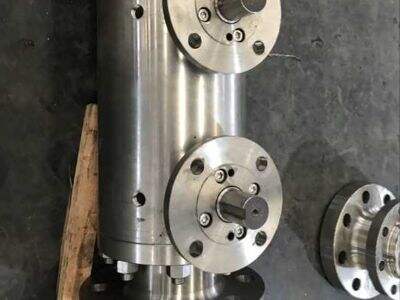Lietošanas DNA kolonnas asinssaites P vārstiem jūsu elektrostacijām? Nodrošinot, ka viss darbojas bez problēmām, vārsts šeit ir galvenais. Neatkarīgi no tā, vai jūs esat pieaugušais, kurš strādā rūpnīcā, vai ziņkārīgs bērns, kurš vēlas uzzināt vairāk, šis rokasgrāmata un pamācība palīdzēs jums izvēlēties pareizo orbītas lodveida vārstu jūsu vajadzībām.
No kā vārsts ir izgatavots
Pirmkārt, apspriedīsim vārsta sastāvu dbb bumbas ventilis . Vārstiem var izmantot dažādus materiālus, un katram materiālam ir savas unikālās īpašības. Parasti izmantotie materiāli ir metāli, piemēram, nerūsējošais tērauds un misiņš. Nerūsējošais tērauds ir ļoti izturīgs, izturīgs pret augstu temperatūru un stipriem ķīmikāliem un tiek izmantots daudzās sarežģītās vidēs. Misīns: vēl viens metāls, taču mīkstāks un viegli veidojams, kas mums palīdz citās kosmētikas jomās.
Bez metāliem vārsti tiek izgatavoti arī no plastmasas un keramikas. Plastmasas vārsti parasti ir vieglāki un tos var izmantot vietās, kur metāls varētu sabojāties. Keramikas vārsti ilgst ilgi un pat darbojas augstā temperatūrā.
Ja iegādājaties vārstu, jums jāsaprot, ka konstrukcija ir tikpat svarīga kā materiāls. Izvēlieties augstas kvalitātes, labi izgatavotus vārstus. Jo, kad tiek pielikts spiediens, izturīgs vārsts ilgst ilgāk un mazāk iespējams, ka tas salūzīs vai noplūdīs. Jūs negribat, lai vārsts, kas jums visvairāk vajadzīgs, atteiktos.
Kad runā par spiedienu un temperatūru
Tagad apsveriet spiedienu. Kāds spiediens jūsu oRBIT BURKĀNA VĀRTIS būs jāsaskaras? Ir augsta spiediena vārsti, kas iztur lielas slodzes, nesabrienot. Citus vārstus paredzēti zemākam spiedienam un tie nav tik izturīgi. Ir ļoti svarīgi, lai izvēlētais vārsts būtu saderīgs ar spiedienu, ar kuru tas saskarsies jūsu mašīnā.
Temperatūra ir vēl viena ļoti kritiska mainīgā vārsta izvēlē. Daži var darboties ļoti karstos apstākļos, bet citi iztur tikai zemāku temperatūru diapazonu. Jūsu vārsts noteikti jādarbina arī pie mašīnas izmantojamās temperatūras. Ja mašīna pārkarst un vārsts to neiztur, tas var izraisīt problēmas.
Arī ņemiet vērā, kādu šķidrumu vai gāzi vārsts ir paredzēts kontrolēt. Katram šķidruma veidam ir unikālas īpašības, no kurām dažas ir svarīgas vārsta darbībai. Piemēram, daži šķidrumi ir ļoti viskozi, savukārt citi — šķidrāki. Arī plūsmas ātrums — cik ātri plūst šķidrums — ir svarīgs faktors. Kopsavilkumā padomājiet par vārsta izmantošanas veidu. Ja to izmanto bieži, tad vēlaties, lai tas būtu izturīgs un izturētu regulāru lietošanu, nenošļaužoties.
Izvēloties pareizo izmēru un pieslēguma veidu
Tagad, kad jūs saprotat materiālus, spiedienu un temperatūru, pienācis laiks padomāt par izmēru un pieslēguma veidu ar vārstu. Vārsta izmērs ir ļoti svarīgs. Pārliecinieties, ka vārsta izmērs atbilst caurulei, kurai tas jāpieslēdz. Pārāk mazs vārsts nelaidīs pietiekamu šķidruma daudzumu. Ja tas ir pārāk liels, tas nederēs labi un varētu noplūst. Tas ir kā mēģināt uzlikt mazu vāku uz lielas katla — tas vienkārši nenotiks.
Viss tas ir atkarīgs no tā, kā jūs pieslēdzat vārstu. Savienojuma veidi: Ir dažādi pieslēguma veidi, piemēram, vītnēti, flanģēti vai metināti. Katram no tiem ir savas priekšrocības, tāpēc izvēlieties veidu, kas vislabāk atbilst jūsu konkrētajām vajadzībām. Vītnētie savienojumi, piemēram, ir vienkārši uzstādīt un noņemt, taču metinātie savienojumi ir ļoti izturīgi — bieži daudz izturīgāki nekā līdzīgi vītnēti savienojumi — taču to uzstādīšanai nepieciešams vairāk pūļu.
Kā pieņemt informētu lēmumu
Pareiza vārsta izvēle var šķist sarežģīta, taču šeit ir daži noderīgi padomi, kas palīdzēs jums pieņemt lielisku lēmumu.
Pirmkārt, apspriedieties ar ekspertiem. Sazināties ar kādu, kurš saprot vārstus un to izmantošanas iespējas, vienmēr ir prātīgi, ja neesat pārliecināti, kuru vārstu izvēlēties. Viņi ir pieredzes zinību avots, kas var pasargāt jūs no kļūdām.
Otrkārt, veiciet pētījumus. Iepazīstieties ar dažādiem vārstu veidiem orbita bilžu vērtes un to priekšrocībām un trūkumiem. Jo vairāk informācijas jums būs, jo labāks būs jūsu lēmums.
Treškārt, nevienkārši neizvēlieties lētāko pārdevēju. Augstāka cena dažkārt nozīmē labāku kvalitāti, bet ne vienmēr. Dārgāka vārsta var būt izturīgāka un uzticamāka, lai gan var būt arī lētākas iespējas, kas veic līdzīgas funkcijas.
Visbeidzot, pārliecinieties, ka to iegādājaties no uzticamas aģentūras, piemēram, Sev-valve. Jums jāiegūst vārsts, kam ir uzticība un augsta kvalitāte. Atrast uzticamu pārdevēju, izlasot atsauksmes un lūdzot ieteikumus.

 EN
EN








































 ONLINE
ONLINE